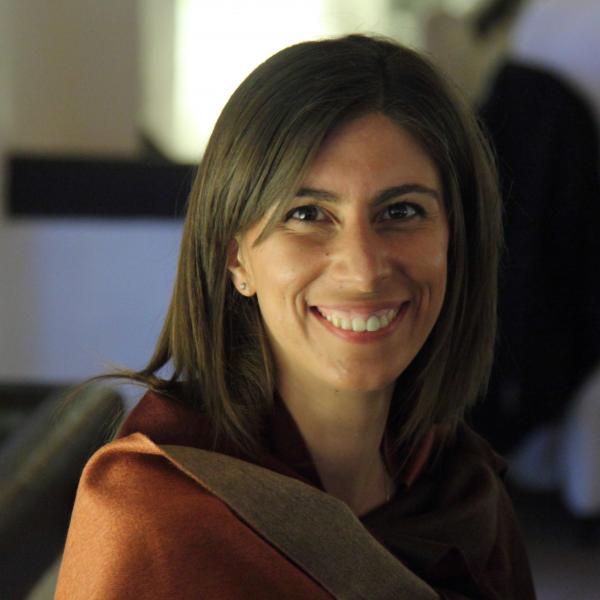I am a historian of literature and art, with a dual specialization in Italian literature (Ph.D., Scuola Normale Superiore of Pisa) and Medieval and Early Modern Art History (Specializzazione, Italian post-graduate degree, University of Pisa).
I work on the interplay between Italian literature and artistic production in Renaissance Italy. I study works of art that are connected to works of literature in terms of subject matter, rhetorical and narrative strategies, and meaning: works which deal, through different languages, not only with similar situations and questions of representation, interpretation and function, but also with the same historical contexts, and often with the same agents and recipients.
I have conducted research at Princeton University, the University of Pennsylvania, the Newberry Library, the Houghton Library at Harvard, the Warburg Institute in London, and the École Normale Supérieure in Paris, and I have published articles and essays on 16th-century illustrated editions and on paintings, drawings, and frescos related to literary works by Ovid, Petrarch, Boccaccio, Boiardo, and Ariosto.
My first book, «Di molte figure adornato»: L’Orlando furioso nei cicli pittorici fra Cinque e Seicento (Milano 2015), studies the early figurative production inspired by one of the main masterpieces of Italian literature: Ludovico Ariosto’s Orlando Furioso. Overturning the prejudice of a small influence of Ariosto’s poem on monumental art, I argue that frescoes gave a timely and crucial contribution to the acknowledgment of the authoritative role of Ariosto’s poem in vernacular literature: artists and patrons established that it had the same dignity as the ancient classics, and accepted it as the first modern classic, therefore anticipating the result of a long theoretical debate.
My current book project, To be continued. Literary frescos at the Farnese Court, analyzes frescoes interrupted for various reasons and completed decades later, and focuses on change, continuity, and coherence in their iconographic programs.
My other current project, Literary Images, aims to understands the role of monumental art in the formation of an Italian literary canon in the Renaissance, and to reflect on the use of and the challenges to this canon in current scholarship as well as in academic curricula, while addressing questions about tradition, transformation, and change.
Selected Publications
- “Un’iconografia insolita: Prometeo a Castello Bufalini.” In «Sempre la cappa a rovescio». Cristofano Gherardi tra capriccio e diligenza, ed. Marco Pierini and Veruska Picchiarelli (forthcoming).
- “Cesare Ripa e le fonti letterarie moderne.” In Cesare Ripa (1622-2022). Nuove ricerche in occasione del quarto centenario della morte, ed. Marco Pierini and Carla Scagliosi (forthcoming).
- “Aurore e tramonti nella pittura narrativa del Cinquecento.” In “Cum tucte le tue creature”. La Natura e i suoi regni tra idea e rappresentazione, ed. Chiara Coletti, Stefania Petrillo, Alessandro Serra. Napoli: Guida Editori (forthcoming).
- with Paolo Cherchi, “L’Orlando furioso nei Commentaria Symbolica di Antonio Ricciardi”, in «Studi e linguaggi», 9, 2 (2024): 271-293.
- “Trionfi e Metamorfosi nella Torre dei Da Pendolasco a Poggiridenti.” In Tracce minime, ed. Rita Pezzola, 97-130. Milano: Franco Angeli, 2022.
- “Rami d’oro e colonne di cristallo: Il poema di Boiardo in pittura,” Parole rubate (2021): 97-116.
- "Ariosto e il canone moderno: il ruolo delle opere d’arte nel dibattito letterario,” Romanische Studien, ed. by C. Rivoletti and K. Nonnenmacher (2020): 205-221.
- “The Literary Canon and the Visual Arts: from the Three Crowns to Ariosto and Tasso,“ in Building the Canon, ed. E. Morra, 158-186. Leiden-Boston: Brill, 2019.
- “La Melissa ritrovata di Jean Boulanger, tra genealogia letteraria e ambizione politica,” Schifanoia, 54-55 (2018): 240-250.
- “«Fu ridotta a un cumulo di orrende ruine»: Palestrina distrutta tre volte, e tre volte rinata,” in Nascere, rinascere, ricominciare: immagini del nuovo inizio nella cultura italiana, ed. L. Benedetti and G. Simonetti, 39-53. L’Aquila: L’Una – L’Aquila UP, 2017.
- «Di molte figure adornato»: L’Orlando furioso nei cicli pittorici fra Cinque e Seicento. Milano: Officina Libraria, 2015.
- “«Sfuma e tondeggia l’Ariosto.» Le arti figurative rispondono all’Orlando furioso,” Apice, 3 (2016): 49-54.
- “«Dove incomincian l’istorie»: l’Orlando furioso, le arti e la definizione del canone letterario,” in I voli dell’Ariosto. L’Orlando furioso e le arti, (Tivoli, Villa d’Este, 14 June - 30 October 2016) ed. M. Cogotti, V. Farinella, and M. Preti, 109-117. Milano: Officina Libraria, 2016.
- “Tra palazzi e ville, torri e grotte: affreschi cinquecenteschi,” in L’Orlando furioso attraverso lo specchio delle immagini, ed. L. Bolzoni, 345-394. Roma: Treccani, 2014.
- “De l’art du livre à l’art de la fresque: sur les pas de l’Arioste à travers l’arc alpin,” in L’Arioste et les Arts, ed. M. Paoli et M. Preti, 156-170. Milano: Officina Libraria en collaboration avec les éditions du Louvre, 2012.
Recent Courses in RLL
- ITAL 22888/32888 Narrative Frescos in Early Modern Italy (Winter 2025, Autumn 2025)
- ITAL 23888/33888 Early Modern Italian Literature and Art (Winter 2026)

